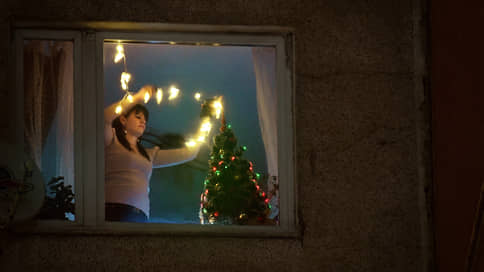Households got a stash for the New Year – Newspaper Kommersant No. 4 (7449) dated 12.01.
[ad_1]

Indirect indicators suggest that private demand did revive in the last week of 2022, although the indicators for most of December did not portend a noticeable traditional surge in pre-New Year spending (see Kommersant of December 30). According to Sberindex, which tracks the spending of individuals on Sberbank cards, nominal spending on goods and services from December 26 to January 1 grew by 6.8% in annual terms, with inflation of 12% at the end of the year – against an increase of 4 .1% in the previous two weeks. Improvement is observed in all components (see graph) – in food, non-food products and services (especially strongly in terms of medical care and the purchase of air tickets). However, the results of December, based on weekly dynamics, turned out to be negative, real consumer spending (in all categories) decreased in December by 0.7% (against November, seasonally adjusted), annual dynamics – minus 6.5% against minus 4.8% in November, analysts of the MMI Telegram channel say.
According to Romir, in December food and non-food items accounted for 48.3% of the expenses of Russians, which is 1.4 percentage points more than in November (46.9%). These expenses turned out to be 2.2% more than in December 2021 (then the annual growth was 2.5%, and in December 2020 – 2.6%). “In 2022, pre-New Year purchases turned out to be a little more modest than in previous years. This is due to the cost-saving strategies that the Russians adhere to, ”explained Ksenia Paizanskaya, director of the M-Romir business area. From January 2 to January 8, 2023, the average weekly nominal household spending increased by 3% year-on-year, with inflation of 11.6% as of January 9 (see “Today’s Number”).
One of the possible explanations for the unexpected improvement in the dynamics of private consumption of citizens in the last week of the year may be their reaction to the sharply intensified devaluation of the ruble at that time, which could stimulate pent-up demand. Indirect evidence of this can be another noticeable outflow of cash rubles from the banking system in December – in the amount of 656 billion rubles. “In December, the population always withdraws money from banks, but this time the outflow was more than twice as high as usual,” analysts from the MMI Telegram channel note. In total, citizens took 1.7 trillion rubles from banks in 2022. against 388 billion rubles. in 2021
[ad_2]
Source link






